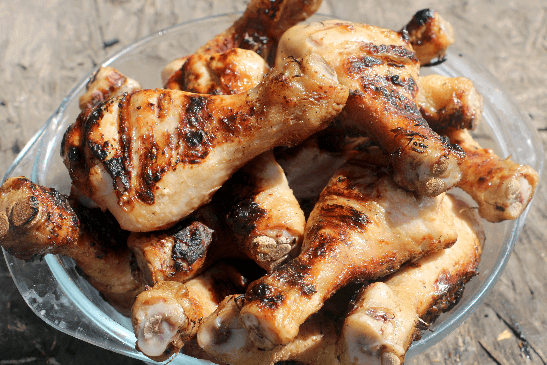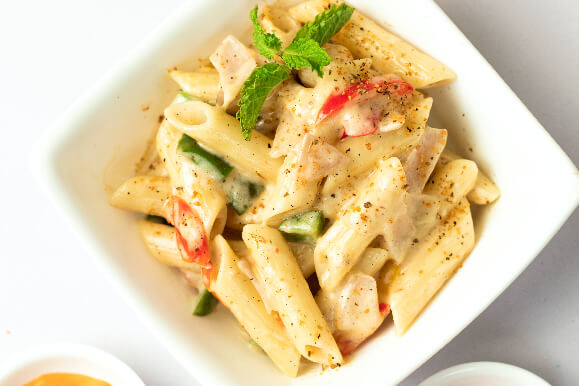Can you reheat sausages?
Yes, you can heat sausages again using a microwave, hob, oven or BBQ. Sausages in a sauce (such as a sausage casserole) can also be reheated using a microwave, hob or slow cooker.
As with all reheating, ensure the middle of the sausage reaches 75°C or higher and then serve them immediately while still piping hot.
Can you reheat an omelette?
Yes, you can warm up an omelette. If you pre-cook an omelette to reheat later, then refrigerate it within 2 hours of cooking and heat it again in 1-2 days. Omelettes are best reheated by microwave, but you can use the oven, hob or even the grill.
Reheated omelettes should be served piping hot and only heated once.
Can you reheat meat like beef or lamb?
It is safe to warm up beef or lamb that has been cooked. However, meat reheated in the oven can become dry and tough, so it is best warmed up using a microwave or hob.
Meats already in a sauce, like a bolognese, are easy to warm up. Just add a little water, heat it and stir it so that all of the dish reaches 75°C or higher, and serve it straight away.
Can you reheat fish?
You can warm all types of fish up. For more information, read our section on dealing with salmon.
Can you reheat eggs?
Yes, you can reheat eggs. However, eggs can be cooked in several different ways and not all types of cooked eggs will warm up well.
Hard-boiled eggs, both in and out of their shell, can be safely reheated. To do so, place them in a bowl, cover them with boiling water and let them stand for several minutes. Never use a microwave to warm up or cook hard-boiled eggs, as they can explode.
If you are pre-cooking hard-boiled eggs, then you should refrigerate them within 2 hours and either consume them cold or heat them within the week.
While reheating fried eggs is safe to do, we do not recommend it because heating them again causes them to become tough and rubbery.
Scrambled eggs and omelettes can be reheated and, for more information, view our section on reheating omelettes.
Can you reheat soup?
Yes, soup can usually be reheated. The best way to do so is to place it in a saucepan over a medium heat until it reaches at least 75°C. You may need to add a little water to it while it is heating to prevent it from thickening.
When reheating soup, it is important to be aware of what is in the soup, and whether any special attention needs to be paid to it. For example, if a soup contains pieces of meat then these should be checked to ensure that they have not been reheated previously, and that they have reached 75°C throughout before they are eaten.
Can you reheat turkey?
Turkey can be reheated, and the guidance for doing so is similar to other meats.
Once cooked, turkey should be stored in the fridge as soon as possible where it will keep for 2-3 days and, after reheating, it should be at least 75°C throughout and served immediately.
Can you reheat jacket potatoes?
Jacket potatoes can be reheated, either in the microwave or the oven. While the microwave is easier, we recommend reheating a jacket potato in the oven because it will make the skin crispier and the inside fluffier.
A jacket potato should be reheated until it is at least 75°C throughout and, once achieved, it should be served immediately while steaming hot. Any fillings that you wish to add should be reheated separately to the potato, and following appropriate guidance.
Can you reheat couscous?
Yes, couscous can be reheated as long as it has been cooked and stored correctly in the first place. If not, harmful bacteria may have grown on it that can make it unsafe to eat.
Before reheating couscous, you should add a small amount of water to it to prevent it from becoming dry and, while it is heating, be sure to stir it frequently to prevent it from clumping and sticking together. As with all other foods, you should ensure that all of the couscous has reached at least 75°C before serving it.
Can you reheat chips?
Reheating chips is safe to do, assuming that they have not already been reheated. If you are planning to reheat some chips, make sure that they are stored in the fridge as soon as possible and, where you can, avoid covering them with any sauces or condiments as this can make them soggy when reheated.
We recommend reheating chips in the oven to help them stay crispy. When reheating, make sure that the chips have reached at least 75°C and serve them immediately.
You can also reheat chips safely in the microwave, but this can cause them to become soggy. If you have no other choice, it may be worth using a clean paper towel to try and remove some of the moisture in the chips before eating them.
Can you reheat spinach?
Yes, spinach can be safely reheated as long as it is piping hot before being eaten. It is best heated slowly on a low heat to preserve its taste and texture.
Some sites claim that spinach cannot be safely reheated because it contains nitrates that, when reheated, become toxic. However, there is no scientific evidence to suggest that this is the case.
For those who are concerned, nitrates only break down at very high heats, so ensuring that spinach is not excessively heated or burned will minimise the breakdown of the nitrates in it.
Can you reheat beetroot?
Yes, you can reheat beetroot. As with all other foods, it should be stored correctly, eaten quickly and heated fully before being consumed to ensure that it is safe.
As with spinach, some sites claim that beetroot cannot be reheated because it causes the nitrates in it to break down and become toxic. There is no evidence to suggest that this is the case and, for those who are concerned, leftover beetroot can be eaten cold in salads or on the side of other dishes.
Can you reheat baked beans?
Yes, you can reheat baked beans as long as they have been stored in a sealed container, refrigerated within 2 hours, and are used within 3 days. As with other foods, it must be heated until piping hot throughout, and must never be reheated in their original metal container.
Reheating Methods
As we have highlighted in this article, there are a range of methods that can be used to reheat food, including some that we have not mentioned such as using a toaster oven or air fryer. You can also reheat foods in ways that differ from the original cooking method.
Regardless of the reheating method chosen, there are several principles that must be followed such as ensuring that food is reheated until it reaches at least 75°C. To help with this, the Food Standards Agency has created a guide that you can refer to when you are reheating food, which you can view here.
At Commodious, we offer several food hygiene and safety courses that explore the safe preparation, cooking, storage and reheating of food in detail. To find out more about them, use the links below:














